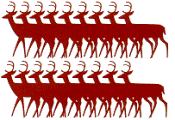United States Department of Agriculture, National Wildlife Research Center: Symposia

Contraception in Wildlife Management
Date of this Version
October 1993
Abstract
Wildlife contraception is only now emerging as a wildlife policy issue It will emerge into a sociopolitical environment that is already polarized from a clash of ideologies. The wildlife conservation/hunting community strives to preserve the status quo while animal welfare and animal rights activists struggle to change wildlife management philosophy and practice to conform to their respective beliefs. Recent professional and popular literature reveal at least four major areas of conflict: (1) anti-management sentiment, (2) anti-hunting sentiment, (3) animal rights sentiment, and (4) animal welfare sentiment. Wildlife managers anticipate that the conflict over the use of contraceptives will involve value and belief conflicts between traditional wildlife management and animal rights proponents. We believe instead that the primary conflicts will revolve around pragmatic issues such as when, where, and in which circumstances managers will LISP the contraceptive tool. In this context, wildlife contraception will be regarded as a "mixed bag." Given the nature and potential polarity of the wildlife contraception issue, wildlife agencies will have to behave proactively by projecting themselves into their future. Currently, wildlife agencies respond to many policy challenges reactively and defensively in an attempt to preserve their past. If a productive compromise can be reached over the issue of if, how, when, and where to use wildlife contraception, the wildlife policy decision process must be visionary, wise, bold, accessible, adaptable, and, most of all, fair.


Comments
Contraception in wildlife management. APHIS Technical Bulletin No. 1853. USDA, Animal and Plant Health Inspection Service, Washington, D.C., USA.